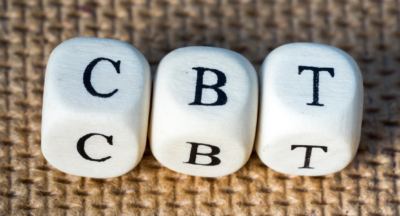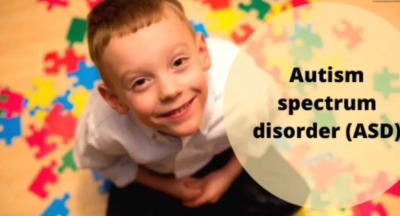
Understanding Depression: Symptoms, Differences, and Treatment Options
Introduction
Depression is a common mental health disorder that affects millions of people worldwide. It is important to understand the symptoms, differences from sadness or grief, and the various ways it can manifest in different age groups and genders. This article will explore the assessment and treatment options available for depression.
Symptoms of Depression
Depression is characterized by persistent feelings of sadness, hopelessness, and a loss of interest or pleasure in activities. Other common symptoms include:
- Changes in appetite and weight
- Sleep disturbances
- Difficulty concentrating or making decisions
- Fatigue or loss of energy
- Feelings of worthlessness or excessive guilt
- Recurrent thoughts of death or suicide
Depression vs. Sadness or Grief/Bereavement
While it is normal to experience sadness or grief after a loss or disappointment, depression is different. Sadness and grief are temporary and typically improve over time, whereas depression is a persistent condition that requires professional intervention. If symptoms persist for more than two weeks and interfere with daily functioning, it may be a sign of depression.
Depression Symptoms in Children and Teens
Depression can affect individuals of all ages, including children and teenagers. In younger individuals, symptoms may manifest differently and can include:
- Irritability or anger
- Withdrawal from friends and family
- Changes in appetite and sleep patterns
- Difficulty concentrating or performing well in school
- Physical complaints such as headaches or stomachaches
If you suspect your child or teenager may be experiencing depression, it is important to seek professional help.
Depression Symptoms in Older Adults
Depression in older adults is often overlooked or misdiagnosed. Symptoms may be attributed to other health conditions or dismissed as a normal part of aging. Common symptoms in older adults include:
- Memory problems
- Unexplained physical ailments
- Withdrawal from social activities
- Feelings of hopelessness or worthlessness
- Increased use of alcohol or medication
It is crucial for healthcare providers and caregivers to be vigilant in identifying depression in older adults and ensuring they receive appropriate support.
Depression Symptoms in Women
Depression affects women at a higher rate than men. Hormonal changes during puberty, pregnancy, and menopause can contribute to the development of depression. Common symptoms in women include:
- Increased irritability or mood swings
- Feelings of guilt or worthlessness
- Changes in appetite and sleep patterns
- Loss of interest in activities
- Thoughts of self-harm or suicide
It is important for women to seek support and treatment if they experience these symptoms.
Depression Symptoms in Men
Depression in men is often underreported and can be masked by anger or irritability. Men may be less likely to seek help due to societal expectations of masculinity. Common symptoms in men include:
- Increased anger or aggression
- Loss of interest in work or hobbies
- Physical symptoms such as headaches or digestive problems
- Substance abuse
- Thoughts of self-harm or suicide
It is crucial to encourage men to seek help and provide them with a safe space to discuss their emotions.
Assessment of Depression
Assessing depression involves a comprehensive evaluation by a healthcare professional. This may include a physical examination, psychological assessments, and interviews to determine the severity and impact of symptoms. It is important to be honest and open during the assessment process to ensure an accurate diagnosis.
Treatment for Depression
Treatment for depression can vary depending on the individual and the severity of symptoms. Common treatment options include:
- Psychotherapy: Talk therapy with a trained therapist can help individuals explore their thoughts and emotions, develop coping strategies, and improve their overall well-being.
- Medication: Antidepressant medications may be prescribed to help regulate brain chemistry and alleviate symptoms. It is important to work closely with a healthcare provider to find the right medication and dosage.
- Lifestyle changes: Engaging in regular exercise, maintaining a healthy diet, getting enough sleep, and reducing stress can all have a positive impact on depression symptoms.
Therapies for Depression
In addition to traditional treatment options, there are alternative therapies that can complement and enhance the treatment of depression. These include:
- Mindfulness and meditation: Practicing mindfulness and meditation techniques can help individuals manage stress, improve self-awareness, and promote emotional well-being.
- Art therapy: Engaging in creative activities such as painting or drawing can provide an outlet for self-expression and emotional healing.
- Exercise therapy: Physical activity has been shown to release endorphins, improve mood, and reduce symptoms of depression.
Conclusion
Depression is a complex mental health disorder that can affect individuals of all ages and genders. Recognizing the symptoms and seeking appropriate treatment is crucial for managing and overcoming depression. With the right support and interventions, individuals can lead fulfilling and meaningful lives.
Related Posts
Understanding Cognitive Behavioral Therapy (CBT) Principles
https://www.youtube.com/watch?v=cLYRV29mflM What is CBT? Cognitive Behavioral...
Understanding DBT: Distress Tolerance and Effective Coping Strategies
Introduction to DBT DBT, which stands for Dialectical Behavior Therapy, is a...
Understanding Autism Spectrum Disorder as per DSM-5-TR
The Diagnostic and Statistical Manual of Mental Disorders, 5th Edition, Text...
Understanding the Cognitive Triad in Cognitive Behavioral Therapy (CBT)
CBT TRAINING AT ITS BEST AT EMOCARE



